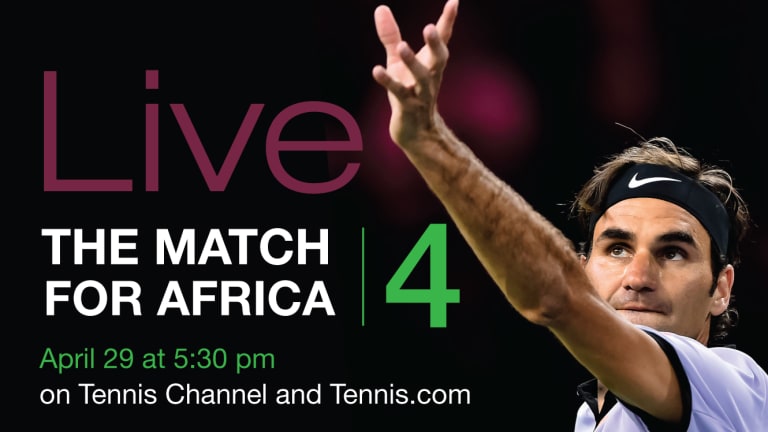Last week, the Boca West Country Club in Boca Raton, Fla. hosted the Rendez-vous à Roland-Garros, in partnership with Longines. This week, we'll take a closer look at what happened in South Florida, including profiles of the Paris-bound champions who will compete for a wild card into the junior Grand Slam, an examination of this worldwide event's rapid evolution and interviews with the players, professionals and personalities who help make this unique red-clay tournament happen.
BOCA RATON, Fla.—As part of his work for the Rendez-vous à Roland-Garros, in partnership with Longines, Sebastien Grosjean stood on one side of a freshly swept clay court at the Boca West Country Club, ready to take on an eager, younger opponent. His challenger wasn’t a promising junior who would be competing in the tournament later that day, or one of his former tour colleagues. It was the most unpredictable opponent of all: a news reporter.
While tennis players lose velocity on their shots after they retire from the tour, they never lose their ability to make someone else look good. It’s the essence of exhibitions, the prerequisite of pro-am matches and stock in trade of senior circuits—the primary playing opportunities for former pros.
Or, in this case, a spot on the local 6 p.m. news. And wouldn’t you know it, the peppy weekend warrior got a few balls past the one-time world No. 4.
Grosjean—who, having lived in Boca Raton since 1999, has probably seen his share of weather reports and sports updates from that reporter’s network—didn’t love the “senior events” he played in after he hung up his racquets. But he loves doubles, and the 38-year-old is planning to make trips to Roland Garros and Wimbledon this summer to play in a pair of special exhibition matches.
“It’s also an opportunity to see the other guys,” says Grosjean, who is likely to team with Michael Llodra or Arnaud Clement, both fellow Frenchmen. “You see them only three or four times a year.”
That may be true for Llodra and Clement, or Fabrice Santoro and Wayne Ferreira, two of Grosjean’s former exo-doubles partners. But not for one of their contemporaries and former adversaries: Roger Federer. At 35, Federer remains as visible as they come in tennis, having won the Australian Open, Indian Wells and Miami titles after a six-month, injury-induced break from the game. With one more victory—and thanks to three over Grosjean—Federer will have 1,100 for his esteemed career (against 246 losses).
“He was really smart to take his time [to come back],” says Grosjean. “I’m sure he was ready for October to play. But when you start in Australia, you have the same start as everybody, because it’s the first tournament of the year.”
For his part, Grosjean has beaten the current world No. 4 twice, both wins coming in 2001, in straight sets. They remain two highlights of a 15-year career that saw the Marseille native win four titles, 341 matches and over $8 million in prize money. More impressive was record at the Slams. Though Grosjean never reached a Grand Slam final, he reached four major semifinals across three different playing surfaces, and made at least one Grand Slam quarterfinal in every year from 2001 to 2006.
The last time Grosjean and his signature backwards cap made their way to the final four of a major was in 2004, at Wimbledon. He entered his semifinal having won all 15 sets he’d played at the All England Club. Then came the most dangerous opponent of all: Federer.
“He’s even more aggressive now,” says Grosjean, whose run came to a screeching, straight-sets halt against the Swiss. “He’s so talented, he can do everything. With confidence, he can produce the kind of game that only he can do. It’s great to see him back at that level.”
